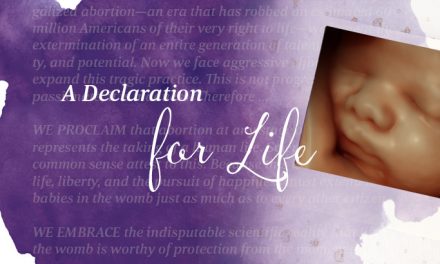In a letter to President Donald Trump, members of the Senate and House are asking the government to stop the federal funding of embryonic stem cell research, which requires the destruction of a human embryo.
Signed by 22 Senators and 72 Representatives, the letter highlights how the government has funded nearly $2 billion of embryonic stem cell research, which has not resulted in any type of success.
“We write today to urge you to issue an Executive Order to end taxpayer funding of human embryonic stem cell (hESC) research and to redirect these scarce federal research dollars toward alternatives that make a real difference for patients,” the letter states.
“We are dismayed that in spite of the strong pro-life stance of your Administration, the National Institutes of Health (NIH) has not only continued but accelerated the Obama-era policy of funding research that involves the destruction of young human embryos.”
The debate over the usefulness and ethically problematic nature of stem cell research started in the late 1990s and early 2000s, with strong support on every side. In order to conduct embryonic stem cell research, scientists destroy the embryos of preborn babies that have been donated to science for medical experiments by families that have completed the in vitro fertilization process.
Celebrities, like actor Michael J. Fox and the late political commentator Charles Krauthammer, sang the praises and touted the potential benefits of research using embryonic stem cells. Both men, who lived with Parkinson’s and paralysis respectively, believed that it was a great leap forward in science.
For families with pro-life convictions, destroying embryos in order to conduct medical research was morally wrong, when other options, like embryonic adoption, were available. The Strege family, who adopted an embryo and had their daughter Hannah, became one of the most prominent voices against embryonic stem cell research (read more in their book A Snowflake Named Hannah).
After extensive debates, President George W. Bush signed an Executive Order limiting federal funding on research that uses and destroys embryos.
“At its core, this issue forces us to confront fundamental questions about the beginnings of life and the ends of science,” Bush said. “My position on these issues is shaped by deeply held beliefs. I also believe human life is a sacred gift from our creator.”
In March 2009, shortly after he took office, President Barack Obama officially reversed President Bush’s ban of the research.
“In recent years, when it comes to stem cell research, rather than furthering discovery, our government has forced what I believe is a false choice between science and moral values,” Obama said during an event at the White House.
“In this case, I believe the two are not inconsistent. As a person of faith, I believe we are called to care for each other and work to ease human suffering. I believe we have been given the capacity and will to pursue this research—and the humanity and conscience to do so responsibly.”
Obama’s decision ended an early 10-year moratorium on federal funding for stem cell research, which was an entirely unnecessary decision.
In 2007, two years before Obama took office, scientists developed an embryo-free way to create stem cells, which makes using embryonic stem cells from donated or discarded embryos completely unnecessary. As Krauthammer, who later changed his mind on stem cell research, wrote, “Bush got it right.”
Adult stem cells have been wildly successful at helping treat and manage certain conditions.
President Trump has limited federal funding for fetal tissue research, and, after requests from members of the House and Senate, he may do the same with embryonic stem cells.
Photo from Shutterstock
Visit our Election 2020 page






